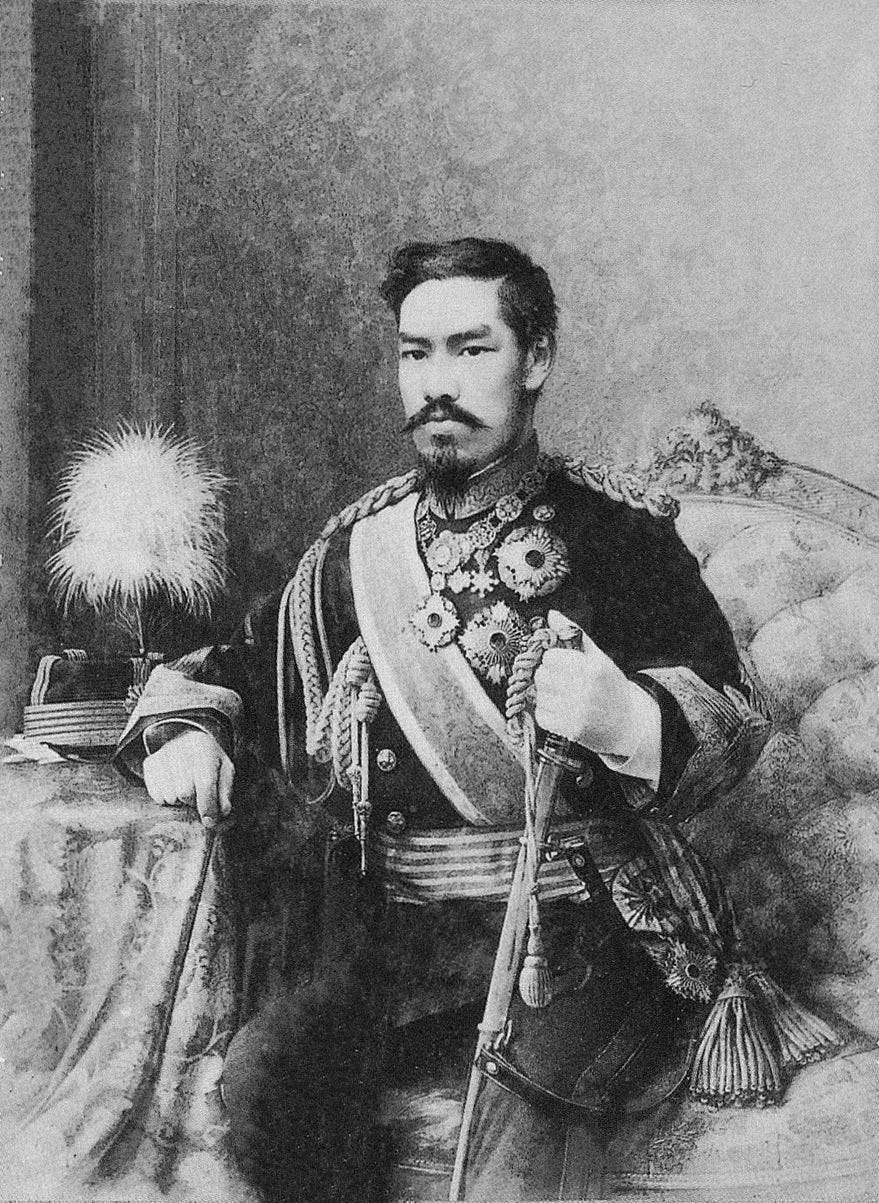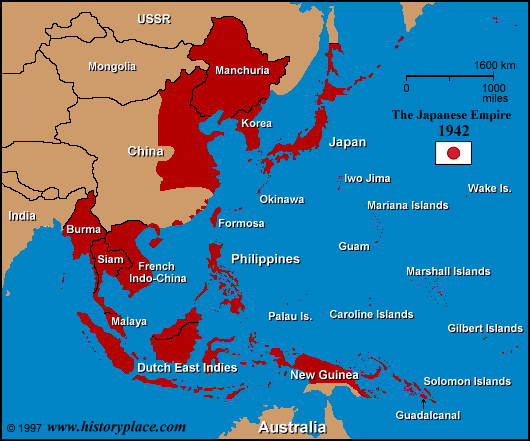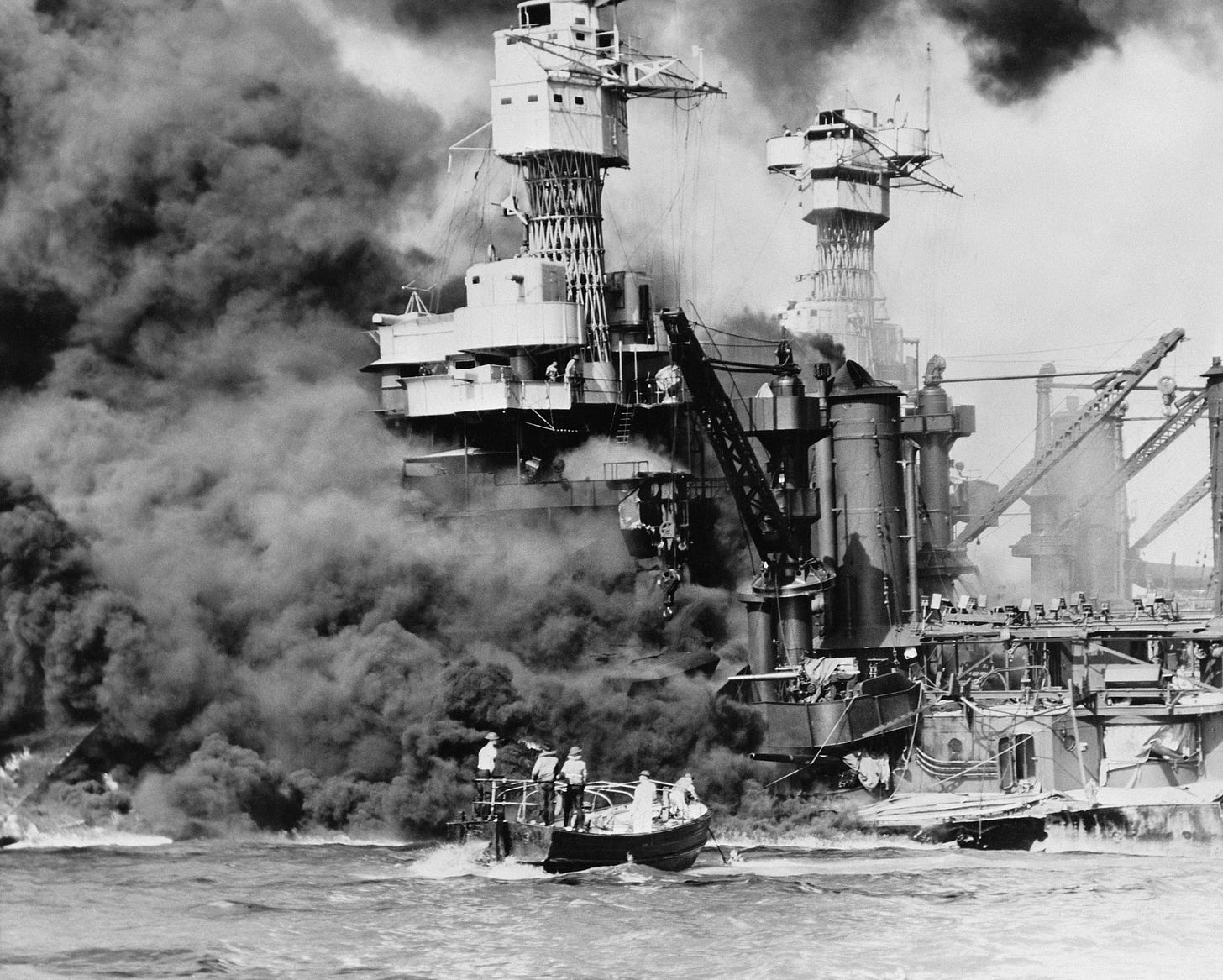“I think we've been fighting the wrong people all this time.”
-General Douglas MacArthur, Commander of The Third U.S. Army Division, 1945
World War II is the source of modern myths, including movies like Hacksaw Ridge and Inglorious Basterds. I enjoy these films, which cast the Allies (British, French, Americans, etc.) as the ‘good guys’… But reality is more murky. The fact is, World War II was a globalist enterprise which had nothing to do with liberating Jews or stopping fascism.
The standard response to this is, “but how were the Americans supposed to react to the attack on Pearl Harbor?,” which shows just how indoctrinated we are. The question should be: why did the Japanese bomb Pearl Harbor to begin with? Were they completely insane to “awaken a sleeping giant, and fill him with a terrible rage,” as Japanese Admiral Yamamoto wrote in his diary?
The answer will become clear as we wade through the ash piles of history.
In this article, Part 1, I explain why the Japanese bombed Pearl Harbor. Our story begins in 19th Century Japan.
A Wise Emperor
Emperor Meiji was afraid. When he was a boy, the British and French had flooded China with opium, a narcotic similar to heroin, causing rampant drug abuse and crime. The Chinese government, alarmed by the social breakdown, banned opium imports and cracked down on dealers.
The European powers, upset that the opium trade was curtailed, responded by waging war. The so-called Opium Wars ended in a crushing defeat of the Chinese Qing dynasty, culminating in the Imperial Palace being looted. Afterwards, the opium trade continued unimpeded.
Meiji, as Emperor of Japan, had to protect his people from such European aggression. He started to immediately modernize the military. Mandatory conscription was introduced in 1873, and every male was granted the right to bear arms. The Japanese built their navy, and mass-produced weapons: machine guns, ammo, and airplanes.
Behind this military armament was a flourishing industrial base. The government invested in shipyards, textile mills, iron factories, and other enterprises to hasten development. From 1873 to 1913, the merchant fleet rose from 26 to 1,514 ships, and over 7,000 miles of railway track were laid. The economy blossomed.
Yet it was only in 1905, when Japan defeated Russia in a war, that the world started to notice. American writers like W.E.B. Dubois and Lothrop Stoddard saw this as a challenge to Western supremacy. Britain, the main colonial power in Asia, took special notice.
A New Colonial Power
Emboldened by its defeat of Russia, and realizing it needed a buffer against further aggression, Japan set about becoming a colonial power itself — just like the British, French and Dutch in the region. The Japanese conquered Korea, and then moved on to China, pillaging Nanking and occupying the northeast. Fearing Russian intervention, Japan signed an anti-Communist pact with Nazi Germany in 1936. Japan soon rivalled Britain as the dominant colonial power in Asia.
When World War II broke out in 1939, Japan joined Italy and Germany in its Axis coalition against Britain and France. Japanese marines invaded French Indo-China, and from there subdued the Dutch East Indies. By 1941, the Japanese empire was only a few hundred miles from Australia.
Throughout these escapades, the Japanese and Americans maintained good relations. The U.S. was initially neutral, not keen to get involved in bloodshed thousands of miles away. The Japanese for their part were grateful, since they depended on the U.S. for imports of natural resources. Nobody wanted a costly war.
Indeed there was no evidence, at this point, that the Japanese wanted to attack the United States.
The U.S. Enters the War — Before Pearl Harbor
However, the U.S. had warmongers in its midst. The most notorious was the president himself, who publicly declared his support for neutrality, while privately harboring imperialist ambitions. President Franklin D. Roosevelt knew that whoever won the war could force their version of globalism upon the world — and he wanted a piece of the action.
On September 14th, 1940, Roosevelt implemented the first peacetime draft in American history, requiring all men from 21 to 36 years of age to be ready for military service. The reaction was furious. 1,500 men were arrested for dodging the draft, and those who finished their 12-month conscription scribbled “O H I O [Over the Hill in October]” on their barrack walls, displaying their intention to leave. The U.S. was not even at war, and its own draftees were against the idea.
Opposition to the war was widespread among Americans. Celebrities like aviator Charles Lindbergh and war hero Robert E. Wood joined the America First Committee, a lobby group advocating neutrality and peace. Indeed, Roosevelt won his 1940 re-election campaign with the promise, “I will not send American boys into any foreign wars.”
It was a lie. In 1941, to cozy up to Britain, Roosevelt ordered American naval ships to shoot Italian and German vessels “on sight.” In 1940, he sanctioned exports of scrap metals and petroleum to Japan, and in 1941 he froze Japanese assets in the U.S. His intention was to provoke a response from the Axis powers.
And a response did indeed come.
The Japanese Attack
The Japanese were in a tough position. Without American raw imports, they struggled to fuel their planes, tanks, and ships, and to maintain their economy. Furthermore, the United States appeared ready to wage war on Japan, given Roosevelt’s hostile moves — including his recent decision to arm Britain. A pre-emptive strike was necessary.
By the winter of 1941, U.S. intelligence had intercepted and decoded Japanese messages warning of an imminent attack on American naval installations in the Pacific. President Roosevelt, who had access to this top secret information, refused to act upon it. He knew that a Japanese attack would stir support for the U.S. entry into the war.
On December 7th, 1941, the Japanese attacked Pearl Harbor, Hawaii, killing 68 Americans and wounding 35. This was followed by strikes on U.S. military bases in Manila, Guam, Wake Island, Davao, and Baguio. Much of the U.S. Pacific fleet was sunk. Roosevelt sacrificed these men for his broader globalist purpose: on December 8, 1941, the United States officially entered the war.
Conclusion
World War II was the deadliest war in history, resulting in 70 million deaths, including the 420,000 Americans who died on the battlefield. Because it crushed fascism in Italy and Germany, and imperialism in Japan, it is sometimes known as “The Good Fight.” Nobody is allowed to question the high-minded moral intentions behind the conflict.
Personally, I think that the soldiers who fought in World War II are heroes, since most believed they were fighting for their country. Such self-sacrifice is worth remembering.
However, leaders like Franklin D. Roosevelt should not be honoured in the same manner. They led their people into war, and sacrificed their own countrymen to the whims of imperialism and greed. Roosevelt, a freemason, acted wickedly in this instance.
An astute reader might ask, at this juncture, “Even if Roosevelt was evil, at least he defeated Hitler and saved the Jews, right?”
If you ask that question, then I have another box of red pills for you to digest, which will have to wait until my next article.
UPDATE. To read Part 2, click here.











Please let the investigation into Churchill be Pt. 3. The two of them, Roosevelt and Churchill, had a working relationship since the First War bordering on friends.
Americans were duped and propagandized into entering the donnybrook.
It might be worthwhile to mention Executive Order 8832. I think that is another huge thing to convince people that the US was anything but neutral in regards to Japan